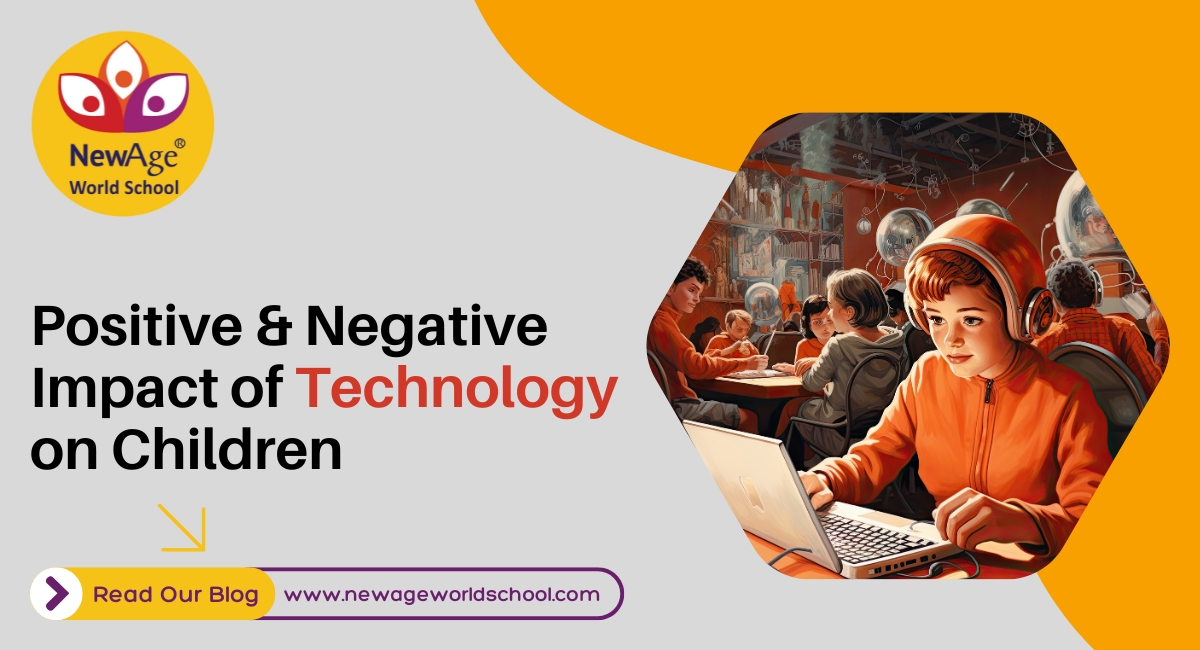

1. Introduction
2. The Digital Revolution in Education
3. Positive Impacts of Technology on Children
4. Negative Impacts of Technology on Children
5. Balancing Technology for Holistic Development
6. Conclusion
7. FAQs
Imagine a world without technology. Sounds impossible, right? In today's world, children are growing up surrounded by gadgets, online learning, and digital tools. Technology has changed how kids learn, play, and interact with the world. But is it all good? Not really. Like two sides of a coin, technology's impact on children can be positive and negative.
This article explores how the digital revolution shapes children's lives, its advantages and disadvantages, and how we can create a balance to ensure a holistic childhood.
Education has completely transformed over the last decade. The shift from textbooks to tablets has made learning more interactive. Schools now use online learning platforms, digital whiteboards, and e-books, making education more accessible. This rapid change became evident during the pandemic when classrooms moved online almost overnight.
However, while technology has made education convenient, it has also raised concerns. The dependency on screens has reduced social interaction, making it harder for children to develop communication skills. Despite these challenges, there is no denying that digital tools have revolutionized how children learn and engage with knowledge.
👉 Also Read: Impact of Digital Devices: Laptops & Tablets in Classrooms
Technology, when used wisely, can offer several benefits for children. One of the biggest advantages is the ability to learn from anywhere. Online learning has made education accessible, especially for students in remote areas. It allows flexibility, interactive content, and a self-paced learning environment, making studies more engaging.
Another benefit is the improvement in critical thinking skills. Various educational apps, coding programs, and puzzle games encourage problem-solving and logical reasoning. Children who use technology effectively develop analytical skills crucial for their future careers.
Moreover, digital tools help kids stay connected with their peers and teachers. Virtual classrooms, online discussions, and collaborative projects promote social interaction in a way that wasn't possible before. Schools, including International School North Bangalore, integrate technology to enhance learning, making students more independent and responsible.
Despite its benefits, technology has its downsides, too. One major concern is excessive screen time. Long hours before a screen can lead to health issues like eye strain, poor posture, and lack of physical activity. Moreover, spending too much time on gadgets reduces social interaction, making children less comfortable with face-to-face communication.
Another downside is the impact of technology on critical thinking. With instant access to answers through search engines, children may not put enough effort into problem-solving. This over-reliance on technology can reduce creativity and analytical thinking skills.
Additionally, exposure to inappropriate content, cyberbullying, and online distractions are other challenges parents and educators face. Without proper guidance, children may develop unhealthy habits that affect their emotional well-being and mental health.
Technology is not the enemy. The real challenge is balancing technology for emotional well-being and ensuring its responsible use. Parents and schools should limit screen time and encourage outdoor activities, hobbies, and face-to-face interactions.
Educational institutions like NewAge World School focus on a structured approach to technology use, blending digital and traditional learning methods to support holistic development in the digital age. This ensures children get the best of both worlds – tech-savvy skills while maintaining their social and emotional growth.
👉 Also Read: 10 Social Skills You Can Start Teaching Your Child Now
Technology is here to stay, and its role in children's lives will only grow. While it offers incredible learning opportunities, it also comes with challenges. The key is to use it wisely and in moderation. Balancing technology for emotional well-being is crucial for raising healthy, well-rounded children.
As parents and educators, we must guide children toward responsible tech use, ensuring they develop academically, socially, and emotionally. The choice is ours – to let technology control us or to use it for a holistic childhood and a brighter future.
Online learning offers flexibility and accessibility, but traditional learning provides better face-to-face social interaction and hands-on experiences.
Yes, but only when used for learning purposes like problem-solving games. Over-reliance on search engines may reduce critical thinking skills.
Setting clear time limits, encouraging outdoor play, and involving kids in offline activities can help manage screen time effectively.
Cyberbullying, reduced social interaction, addiction, and exposure to harmful content are some major risks.
Technology can enhance learning, but excessive screen time may impact attention span and memory. Balanced usage helps in cognitive growth.
Leave a Reply
Your email address will not be published. Required fields are marked *
Comments
No comments available